Department of Psychology
History
The Department of Psychology has a varied and colored history whose growth parallels the growth of the University from the introduction of liberal arts courses under the aegis of the Bowie State College to its present status as a university.
The first psychology classes were offered in 1954 in support of teacher education and were taught by Wendell Jones, PhD, a graduate of the University of Chicago. Dr. Jones was joined by A. Anderson Dumas, PhD (Catholic University) in 1957. In 1961, the State Board of Education authorized the first four-year program to train senior high school teachers, and in 1963, the college was authorized to offer programs in Arts and Sciences, accompanied by a new academic nomenclature, "Bowie State College." The Department of Education and Psychology was created in 1964 with A. Anderson Dumas as chairperson. Two years later, (1966) Eugene Roane Arnold became chair of the department with added faculty members. Dr. Dumas and J. Alexander Wiseman, the latter for whom the student center is named.
The psychology program attained status as an individual department in 1971 with G. Patricia Hauk, PhD (Catholic University) as its acting chairperson. Charles Mansueto, PhD (Catholic University) also joined the faculty as the first full-time faculty member of the new department. Gloria Massie, MA, formerly of the education department, joined the new psychology department, and Donald Briggs, MA, of the Counseling Center, began a decade of teaching courses for the department. The new department was housed in the Crawford Science Building, with one room designated as the psychology laboratory. Research animals (rats) were housed in the biology department's animal storage facility.
In 1973, Charles Stokes, PhD (University of Michigan) joined the faculty and replaced Patricia Hauk as chair when Dr. Hauk was made the academic dean. Dr. Hauk continued to teach courses in the department, however. Roland Law, PhD (Duke University) joined the faculty along with Christine Carrington, PhD, who later became the director of clinical raining at Howard University. The first student newsletter, titled PSYC-OUT, was published in December, 1974. It provided a vehicle for faculty and students to express their views about various topics in the discipline and communicate to the entire campus community.
By 1975, Dr. Charles Mansueto replaced Dr. Charles Stokes as chair of the Psychology Department. The department received a $100,000 federal grant for the development of the psychology laboratories and teaching technologies. The BS degree program was offered for the first time in 1975, and its heavy concentration in applied psychology courses quickly made it the program of choice by students over the traditional BA degree. The psychology practicum program was implemented and practical training became a component of psychology education. The department offices moved to the MLK Communication Arts Center with the psychology lab remaining in the Crawford Science Building.
In 1977, the psychology, sociology, and anthropology programs moved to a renovated Banneker Hall and occupied the entire building. Beside faculty offices, Banneker also housed two classrooms, an experimental lab, a statistics lab, and an animal research laboratory. The psychology, sociology, and anthropology programs grew to become the second largest academic department on campus (after education).
Steven Newbold II, a very active psychology major in the department, graduated with a Bachelor of Science degree in psychology and returned in 1979 to head the psychology laboratory and practicum programs. In the 1980s, after earning a MA degree in social work and a PhD degree in psychology, Dr. Newbold received a joint faculty in social work and psychology. In 1977, Jesse Ingram, PhD, JD (University of Michigan, University of Baltimore) and Michael J. Stiers, PhD, (American University) joined the faculty. In 1979, Dr. Ingram became the chair of the department, replacing Dr. Charles Mansueto, who spent a sabbatical at Temple University School of Medicine.
In 1985, Cornelia Brooks graduated with a Bachelor of Science in psychology and returned to join the department faculty in fall, 1990, after completing all her course requirements for a PhD in cognitive psychology from the University of Wisconsin. John Clausen, PhD, (Catholic University) joined the faculty in 1986. On July 1, 1988, Bowie State College gained university status and became known as "Bowie State University." In that same year, the psychology program became part of the Department of Behavioral Sciences and Human Services, along with sociology, social work, and counseling. Dr. Douglas Snyder was appointed chair of this department.
In 1993, Gloria Massie, MA, retired (along with her famous hats) and a scholarship was created in her name. Two scholarship awards are given each year to junior level students who have excelled in academic performance, leadership, and community service. From 1993 to 1998, the following persons headed the Department of Behavioral Sciences and Human Services:
- Dr. Doris Polston (social work faculty)
- Dr. Quentin Newhouse (psychology faculty since 1993)
- Dr. Annie Ruth Leslie (sociology faculty since 1998)
Between 1997 and 1998, two new faculty members joined the department: Dr. Patricia Westerman (Catholic University) and Dr. Cheryl Blackman (Howard University). Again, in 1999, the psychology program became an individual department, with Dr. Jesse Ingram as chairperson. In the summer of 2000, the department moved to the Center for Learning and Technology, and Cheryl Blackman, PhD, became chairperson. Current full-time faculty members include: Cornelia Brooks, MS, John Bryant, PhD, Jesse Ingram, PhD, JD, Katrina Kardiasmenos, PhD, Ometha Lewis-Jack, PhD, Ayana Lynch, PhD, and Patricia Westerman, PhD.
Today, the department has over 350 majors and offers two degree programs: a Bachelor of Science and a Bachelor of Arts in psychology. Both programs prepare students for graduate school in the major areas of psychology and careers in health and education. Future plans include the creation of a graduate program in clinical psychology, the development of a psychophysiological laboratory (which would include training in biofeedback techniques), and the establishment of a cognitive psychology laboratory.
